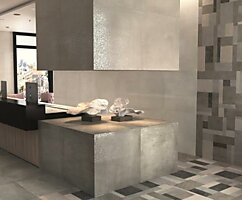Iran in the 60s (20 photos)
 Bashny.Net
Bashny.Net
When people in the West today hear the word "Iran", they come to mind veiled women, burning American flags and an angry mob shouting nationalist slogans. But those who keep the memories of Tehran 1960s-70s, painted themselves completely different picture.
Aerial view of Vali-Asr Square in 1971. Courtesy of Kaveh Farrokh
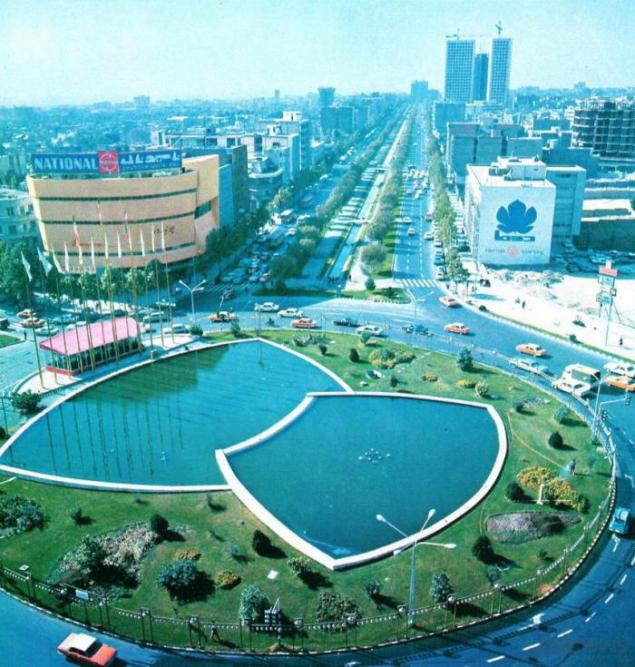
Before the 1979 Islamic Revolution of Iran was the capital of one of the most culturally advanced in the world. The newspaper The New York Times wrote: "Before the revolution, Iran was the most cultural and multi-ethnic country in the region. There quickly developed art, literature, film and television industry. " Education could receive both men and women, and to rest the people went to the ski resorts located in the mountains Elbrus. Kaveh Farrokh (Kaveh Farrokh), the author of the photo below, now lives in Canada, but remember conducted in Iran youth, when it was possible to watch American films in movie theaters and upscale roam the airport, is crammed with cutting-edge technology of the time.
However, the sweet life was not for all Iranians. Social and economic inequalities caused by the policy of the government of Mohammed Reza Pahlavi, the Shah of Iran, led to the poverty of some and the incredible wealth of others. Similar contrasts and led to the downfall of the government of the Shah and the Islamic Revolution of 1979, the effects of which still define the course of the country.

2. Students in the park at Tehran University in 1971. Courtesy of Kaveh Farrokh
Women were first admitted to study at the university in 1934, long before the same thing happened in the United States. After the revolution, women still have the right to receive higher education, but now they learn separately from men. About miniskirts, no one even remembers. But even despite this openness, in 1977 only 35% of women were educated in Tehran.

3. Gateway to the University of Tehran in 1971. Courtesy of Kaveh Farrokh
After the Revolution, the university courtyard used for mass Friday prayers.

4. Students of Tehran University. 1970. Courtesy of Kaveh Farrokh
Although religion was a popular subject, lectures on mathematics, astronomy, medicine and literature are also popular. Today at Tehran university has about 35,000 students in full-time and part-time day and part-time modes of study.
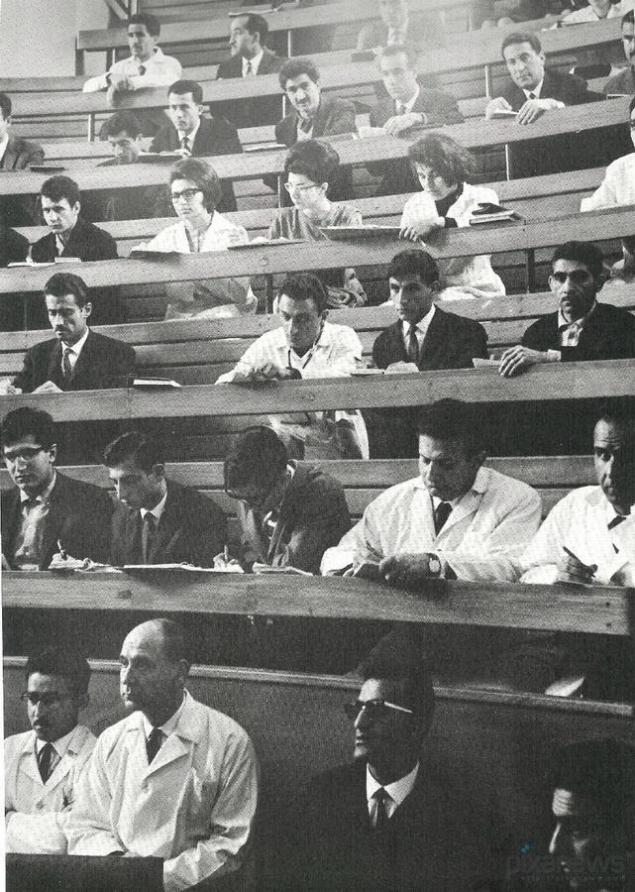
5. Students medical department of the University of Tehran. Courtesy of Kaveh Farrokh
Now is the University Library of 17,000 volumes of manuscripts in Persian, Arabic and Turkish.
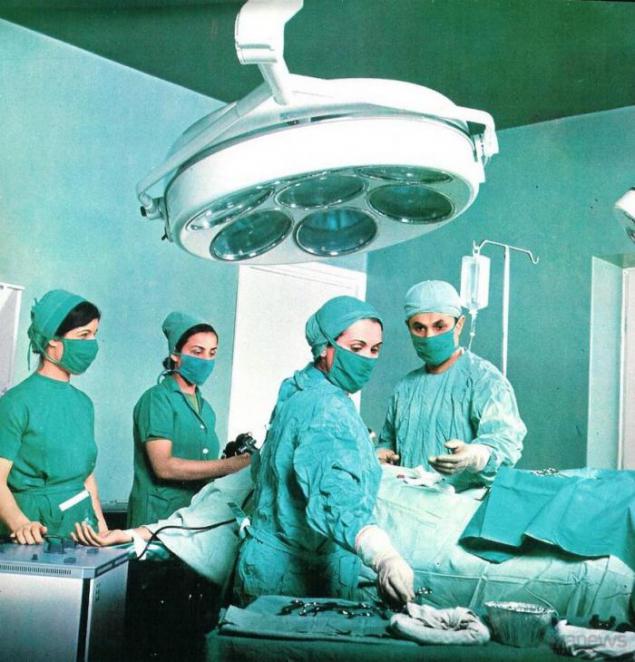
6. Operating hospital in Tehran in 1971. Courtesy of Kaveh Farrokh
By the end of the reign of the Shah, Iran's 34 million inhabitants lechilo all 15,000 doctors. There were problems with the medicine, especially outside the major centers such as Tehran.

7. Vali-Asr Street, formerly known as Pahlavi street in honor of the ruling dynasty, in 1960. Courtesy of Kaveh Farrokh
This street, surrounded by trees, is one of the busiest in Tehran.

8. Hilton Hotel in Tehran, 1961. Courtesy of Kaveh Farrokh
Now it is called Esteghlal International Hotel. Farrokh says that in 1960 in the vicinity of the hotel townspeople often walking, but when he was in the city in 2001, he discovered that the building is surrounded by a variety of industrial buildings.
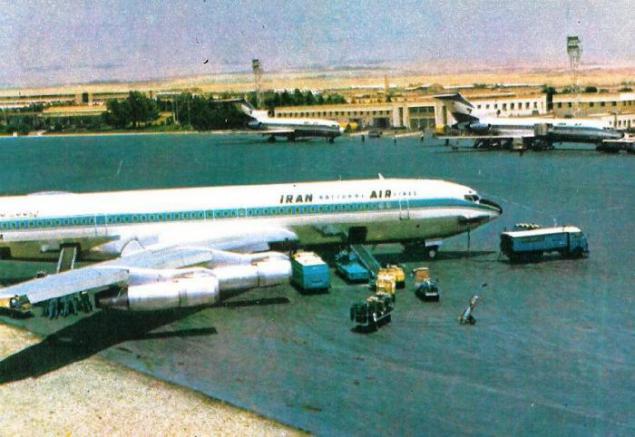
9. Mehrabad International Airport in 1971. Courtesy of Kaveh Farrokh
Mehrabad was to become one of the busiest and most modern airports in the west of Asia, but the revolution has significantly reduced the influx of tourists. In the 1960s when air travel was still a novelty for the people, and airports fascinated with their uniqueness, located at Mehrabad popular jazz cafe. Now most of the international flights takes Tehran Imam Khomeini International Airport.

10. Photo streets Istanbul in 1965. Courtesy of Kaveh Farrokh
Trendy American cars were not uncommon on the streets of Tehran. Visit the capital of Iran at that time it was just as prestigious as a trip to New York or Paris.
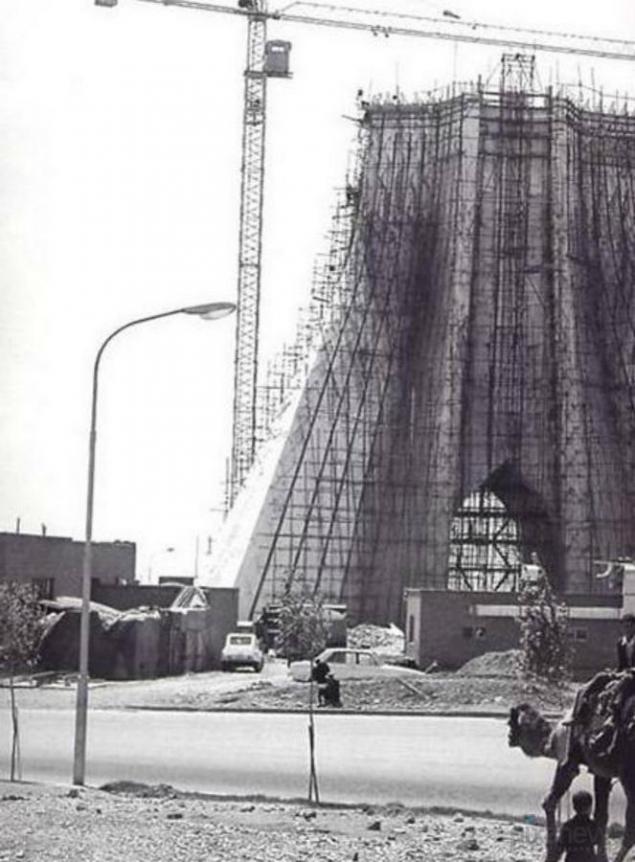
11. Tower in memory of the kings of Tehran (in 1979 was renamed the Freedom Tower or Azadi Tower)
during construction in 1966. Courtesy of Kaveh Farrokh
Later monument became firmly associated with the city, and Farrokh calls it "the Eiffel Tower Tehran».
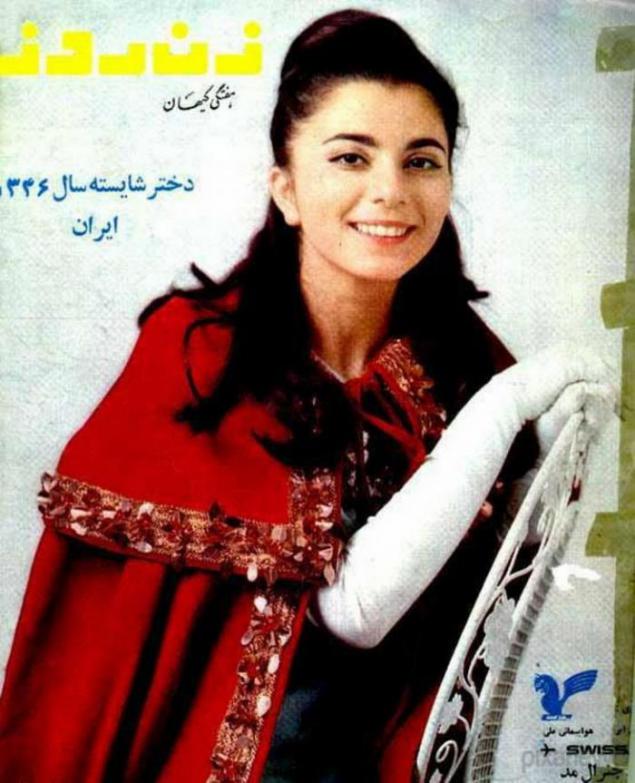
12. Miss Iran 1967 Shahla Vahabzhadi. Courtesy of Kaveh Farrokh
Beauty contest held at the Hilton Hotel, where the contestants fought for the title of most beautiful girl of the country.
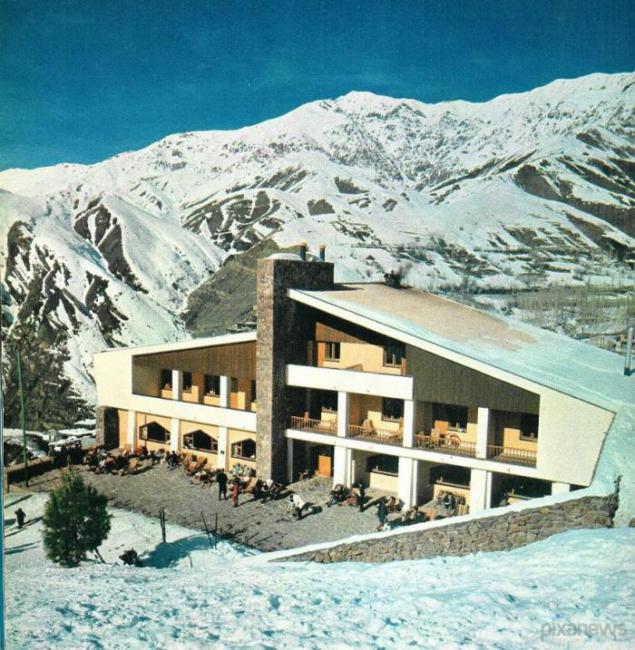
13. Ski Shemshak in 1971. Courtesy of Kaveh Farrokh

14. Ski Abali in 1966. Courtesy of Kaveh Farrokh
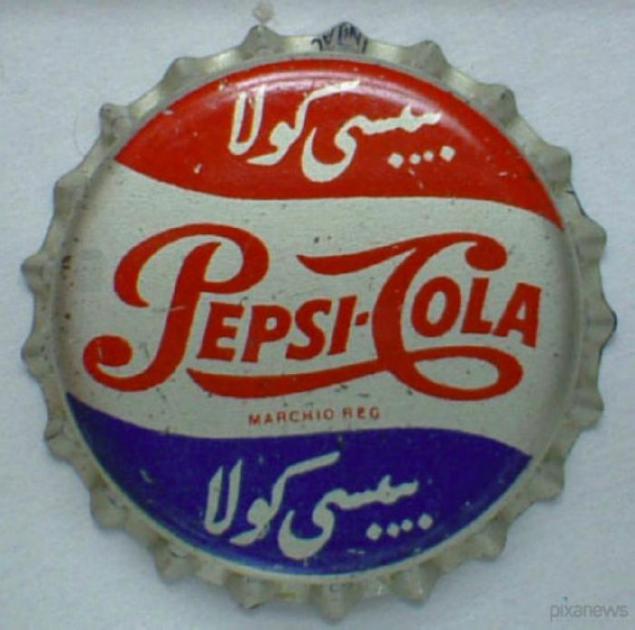
15. Cap the Pepsi-Cola of Iran-1970s. Farrokh says tegerantsy always considered his Pepsi tastes better American. Courtesy of Kaveh Farrokh
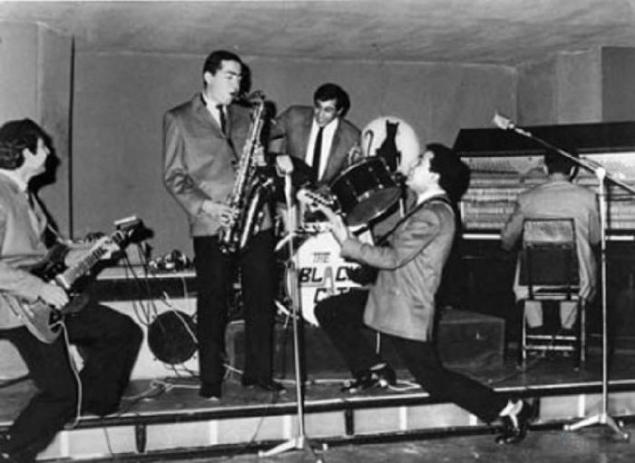
16. The Iranian rock-jazz group called the Black Cats (the Black Cats). Courtesy of Kaveh Farrokh
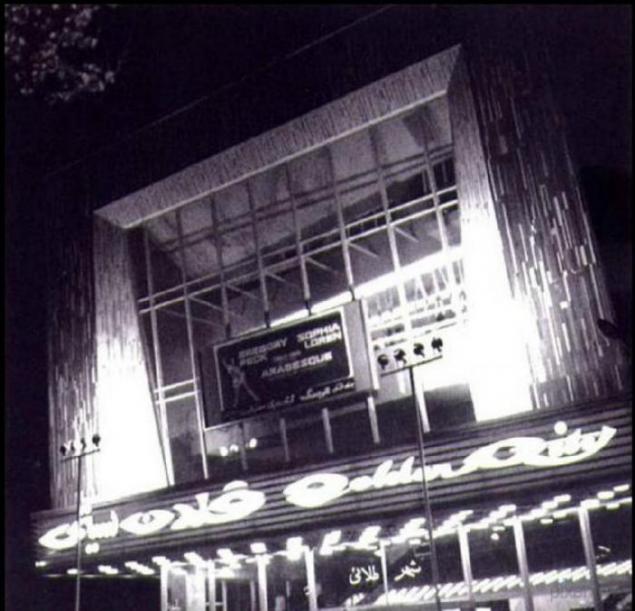
17. Golden City Cinema Cinema in 1971. The poster can be seen the name «Arabesque» - a movie with Gregory Peck and Sophia Loren. Courtesy of Kaveh Farrokh
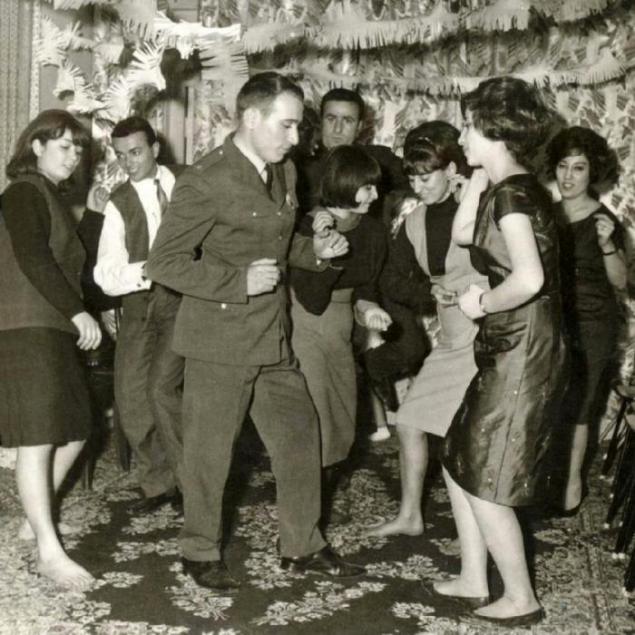
18. Twist in Tehran? Cream of Tehran society took off shoes and dancing to rock and roll in the early 1960s. Courtesy of Kaveh Farrokh
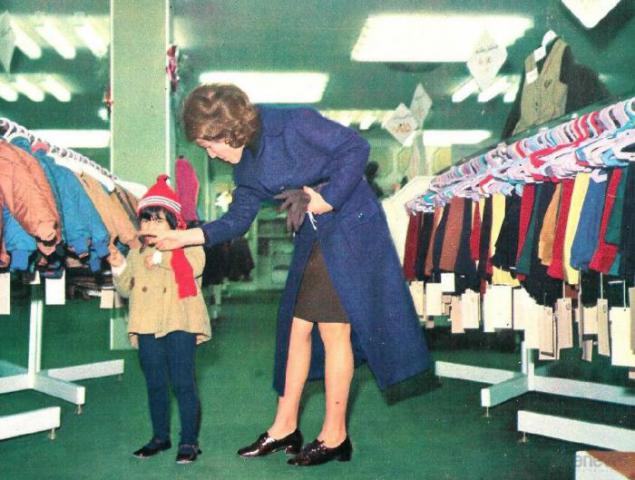
19. Mother and son in the children's department store in Tehran in 1971. Courtesy of Kaveh Farrokh
In a department store Kourosh, except chic clothing for men and women, on the top floor also has a luxury restaurant.
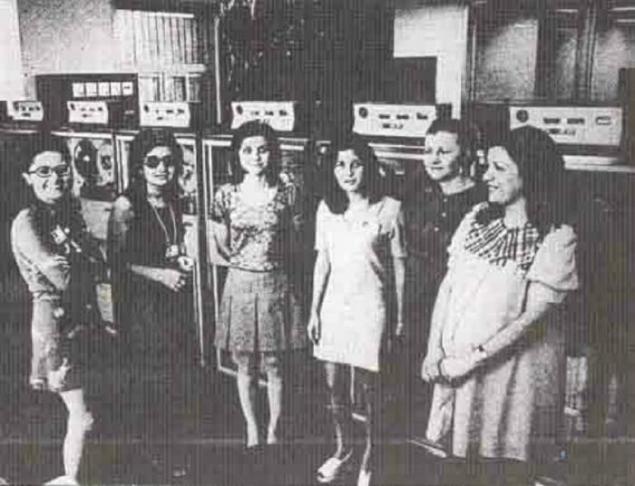
20. The transceiver of Iran in the early 1970s. Courtesy of Kaveh Farrokh
State television and radio broadcasting company "National Radio and Television of Iran" was opened in 1971 Rezo Gotbi, a close relative of the former Queen of Iran. Gotbi now lives in the United States.
Aerial view of Vali-Asr Square in 1971. Courtesy of Kaveh Farrokh

Before the 1979 Islamic Revolution of Iran was the capital of one of the most culturally advanced in the world. The newspaper The New York Times wrote: "Before the revolution, Iran was the most cultural and multi-ethnic country in the region. There quickly developed art, literature, film and television industry. " Education could receive both men and women, and to rest the people went to the ski resorts located in the mountains Elbrus. Kaveh Farrokh (Kaveh Farrokh), the author of the photo below, now lives in Canada, but remember conducted in Iran youth, when it was possible to watch American films in movie theaters and upscale roam the airport, is crammed with cutting-edge technology of the time.
However, the sweet life was not for all Iranians. Social and economic inequalities caused by the policy of the government of Mohammed Reza Pahlavi, the Shah of Iran, led to the poverty of some and the incredible wealth of others. Similar contrasts and led to the downfall of the government of the Shah and the Islamic Revolution of 1979, the effects of which still define the course of the country.

2. Students in the park at Tehran University in 1971. Courtesy of Kaveh Farrokh
Women were first admitted to study at the university in 1934, long before the same thing happened in the United States. After the revolution, women still have the right to receive higher education, but now they learn separately from men. About miniskirts, no one even remembers. But even despite this openness, in 1977 only 35% of women were educated in Tehran.

3. Gateway to the University of Tehran in 1971. Courtesy of Kaveh Farrokh
After the Revolution, the university courtyard used for mass Friday prayers.

4. Students of Tehran University. 1970. Courtesy of Kaveh Farrokh
Although religion was a popular subject, lectures on mathematics, astronomy, medicine and literature are also popular. Today at Tehran university has about 35,000 students in full-time and part-time day and part-time modes of study.

5. Students medical department of the University of Tehran. Courtesy of Kaveh Farrokh
Now is the University Library of 17,000 volumes of manuscripts in Persian, Arabic and Turkish.

6. Operating hospital in Tehran in 1971. Courtesy of Kaveh Farrokh
By the end of the reign of the Shah, Iran's 34 million inhabitants lechilo all 15,000 doctors. There were problems with the medicine, especially outside the major centers such as Tehran.

7. Vali-Asr Street, formerly known as Pahlavi street in honor of the ruling dynasty, in 1960. Courtesy of Kaveh Farrokh
This street, surrounded by trees, is one of the busiest in Tehran.

8. Hilton Hotel in Tehran, 1961. Courtesy of Kaveh Farrokh
Now it is called Esteghlal International Hotel. Farrokh says that in 1960 in the vicinity of the hotel townspeople often walking, but when he was in the city in 2001, he discovered that the building is surrounded by a variety of industrial buildings.

9. Mehrabad International Airport in 1971. Courtesy of Kaveh Farrokh
Mehrabad was to become one of the busiest and most modern airports in the west of Asia, but the revolution has significantly reduced the influx of tourists. In the 1960s when air travel was still a novelty for the people, and airports fascinated with their uniqueness, located at Mehrabad popular jazz cafe. Now most of the international flights takes Tehran Imam Khomeini International Airport.

10. Photo streets Istanbul in 1965. Courtesy of Kaveh Farrokh
Trendy American cars were not uncommon on the streets of Tehran. Visit the capital of Iran at that time it was just as prestigious as a trip to New York or Paris.

11. Tower in memory of the kings of Tehran (in 1979 was renamed the Freedom Tower or Azadi Tower)
during construction in 1966. Courtesy of Kaveh Farrokh
Later monument became firmly associated with the city, and Farrokh calls it "the Eiffel Tower Tehran».

12. Miss Iran 1967 Shahla Vahabzhadi. Courtesy of Kaveh Farrokh
Beauty contest held at the Hilton Hotel, where the contestants fought for the title of most beautiful girl of the country.

13. Ski Shemshak in 1971. Courtesy of Kaveh Farrokh

14. Ski Abali in 1966. Courtesy of Kaveh Farrokh

15. Cap the Pepsi-Cola of Iran-1970s. Farrokh says tegerantsy always considered his Pepsi tastes better American. Courtesy of Kaveh Farrokh

16. The Iranian rock-jazz group called the Black Cats (the Black Cats). Courtesy of Kaveh Farrokh

17. Golden City Cinema Cinema in 1971. The poster can be seen the name «Arabesque» - a movie with Gregory Peck and Sophia Loren. Courtesy of Kaveh Farrokh

18. Twist in Tehran? Cream of Tehran society took off shoes and dancing to rock and roll in the early 1960s. Courtesy of Kaveh Farrokh

19. Mother and son in the children's department store in Tehran in 1971. Courtesy of Kaveh Farrokh
In a department store Kourosh, except chic clothing for men and women, on the top floor also has a luxury restaurant.

20. The transceiver of Iran in the early 1970s. Courtesy of Kaveh Farrokh
State television and radio broadcasting company "National Radio and Television of Iran" was opened in 1971 Rezo Gotbi, a close relative of the former Queen of Iran. Gotbi now lives in the United States.
Tags
See also
In 1999, this photo spread around the world! What is today the boy with the picture "Hand of Hope"
A picture can say more than a thousand words.
Fier Ross (Ross Feighery) traveled the western United States
Weather Surprises 2008 (18 photos)
The day in pictures, March 8, 2011
Rules of conduct in the Japanese subway
57 facts about Morocco
The shooting of four nationalists near Moscow
She decided to sell everything in order to realize his dream ... And that radically changed her life!
A year ago, these frames are stirred up world - today they will be continued









